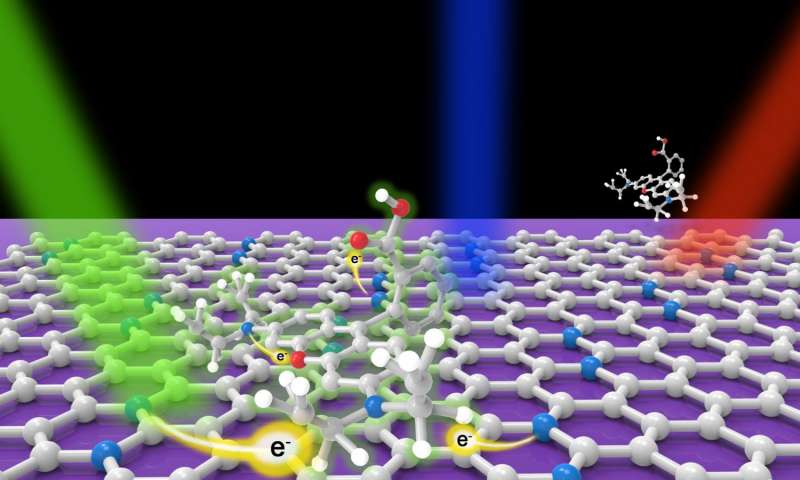An international researchers team from Penn State recently discovered a highly sensitive chemical sensor with nitrogen-doped graphene in form of substrate. Based on Raman spectroscopy, this substrate was doped i.e. graphene’s carbon structure was infused with nitrogen atom. This technique has been developed to detect minute amount of molecules in a very low concentration solution. It is almost 10,000 times more diluted that cannot be seen by normal human eye.

Raman spectroscopy is a commonly adopted technique of identification employed in chemistry, pharmaceutical, and material science industry. It is primarily used for detection of unique vibrations emanating from internal level of molecules. Whenever molecules or crystals get irradiated from laser light, it leads to scattering or shifting of colors. The scattered light can be detected easily in form of Raman Spectrum. It serves more like a fingerprint for every kind of Raman-active irradiated system.
Mauricio Terrones, the professor of Chemistry, Physics, and Material Science at Penn State, explains, “Basically, different colors in the visible spectrum will be associated to different energies, imagine each molecule has a particular light color emission, sometimes yellow, sometimes green. That color is associated with discrete energy.”
For this project, the team selected three kinds of fluorescent dye molecules. These kinds of dyes are used in all kind of biological experiments as markers. The fluorescence is a little hard to be detected in Raman Spectroscopy as it washes out from signals. When this dye gets added to graphene or the N-doped graphene substrate, the fluorescence or photoluminescence gets quenched.
Individually, Raman signals are highly weak and one needs to use multiple methods for enhancing their strength. A recently adopted technique employs pristine graphene in form of substrate that can increase the Raman signal by a large magnitude. Therefore, addition of nitrogen atoms to graphene increases its sensitivity to a larger extent. The author of this paper, Simin Feng, a graduate level student from Terrones’ group, explains, “By controlling nitrogen doping we can shift the energy gap of the graphene, and the shift creates a resonance effect that significantly enhances the molecule’s vibrational Raman modes.”
Another co-author and research associate from the same group, Ana Laura Eilas, further adds, “This is foundational research. It is hard to quantify the enhancement because it will be different for every material and color of light. But in some cases, we are going from zero to something we can detect for the first time. You can see a lot of features and study a lot of physics then. To me the most important aspect of this work is our understanding of the phenomenon.”
Filed Under: News


Questions related to this article?
👉Ask and discuss on Electro-Tech-Online.com and EDAboard.com forums.
Tell Us What You Think!!
You must be logged in to post a comment.